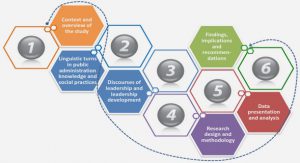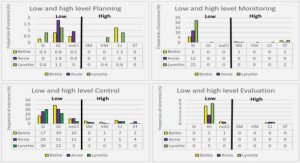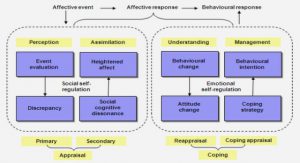Get Complete Project Material File(s) Now! »
Chapter 3 RHYTHM PERCEPTION BY COCHLEAR IMPLANTEES IN CONDITIONS OF VARYING PITCH
INTRODUCTION
A melody can be described as a succession of tonal events that unfold over time, with individual events related to one another according to a tonal and temporal structure. This implies that pitch and rhythm information both contribute to constituting a perceptually meaningful melody. Moreover, pitch and rhythm patterns seem to function in an interdependent (Kidd et al. 1984; Boltz 1999; Lebrun-Guillaud & Tillman 2007) and often complementary (Jones 1993) way to create musically coherent wholes for perception. This is supported by the modular approach to music processing, which, based on results from neurocognition and lesion studies, suggests that separate yet parallel cortical processing pathways exist for time- and pitch-related information (Peretz & Coltheart 2003). The pathways are believed to be organised in a serial, hierarchical manner, with regard to both structure and function, which allows processing output from the two domains during earlier stages to combine at a higher hierarchical level to generate a coherent musical percept (Peretz & Kolinsky 1993; Schuppert et al. 2000; Peretz & Coltheart 2003; Griffiths 2003; Semple & Scott 2003).
Successful melody perception therefore requires adequate perception of pitch as well as rhythm information. It follows that constrained information transfer of either (or both) of these dimensions will hamper melody perception. Temporal resolution afforded by a CI, as inferred from gap detection thresholds, appears to be similar to that of NH listeners (Moore & Glasberg 1988; Shannon 1989; Grose & Buss 2007). These authors concluded that temporal resolution is probably determined at a post-cochlear stage, whereas pitch resolution is determined already at the cochlear level. It is thus reasonable to expect that CI users should perform better on melodic rhythm than on pitch perception tasks, and possibly even at a level comparable to NH listeners, since temporal information is probably transmitted to the auditory cortex relatively unconstrained.
However, studies regarding implant users’ music perception abilities (e.g. Gfeller & Lansing 1991; Gfeller et al. 1997; Kong et al. 2004; Galvin et al. 2007; Cooper et al. 2008; Looi et al. 2008) have shown that although significantly better than pitch perception, rhythm perception is not unambiguous. Using pairs of simple monotonic rhythmic patterns, which subjects had to judge as the same or different, Gfeller et al. (1997) showed that CI users performed similarly to NH listeners. In the same study, however, when a discrimination judgement had to be made for more complex rhythmic patterns, implant users performed significantly poorer than NH listeners. Similarly, Kong et al. (2004) found, albeit in a small sample, that CI users performed 5–25% worse than an NH control group on a rhythm identification task.
Observations that simple familiar melodies are better recognised when pitch as well as rhythmic cues are available (Gfeller et al. 2002; Galvin et al. 2007) highlight the important contribution of rhythmic cues to CI-mediated melody perception. It is possible that when confronted with limited pitch information during melody perception, the auditory system relies on rhythm information to supplement insufficient information to achieve the best possible melody perception in constrained conditions. In this regard recent findings regarding the rhythm perception abilities of amusic listeners are important. Amusic listeners often find it difficult to follow pitch changes in a melody, which possibly stems from deficits in processing pitch information (Foxton et al. 2004). Within the framework of early independent processing of pitch and rhythm information (Peretz 1990; Peretz & Coltheart 2003) one would expect that rhythm perception should be unaffected by pitch processing deficits. However, Foxton et al. (2006) showed that amusic listeners’ perception of pitch-varying rhythmic patterns was significantly poorer than that of NH listeners. The authors suggested that when pitch and rhythm information covary in the same sound sequence, the information is encoded as a unified representation rather than activating two separate processing systems. Insufficient pitch processing hence appears to interfere with rhythm perception.
CI users also experience pitch processing difficulties, although not derived from central processing impairments (see for example Koelsch et al. 2004) but rather owing to insufficient delivery of pitch-related information to the central auditory system (Rubinstein 2004; Sucher McDermott 2007), and as such can be regarded as functionally tone-deaf. This raises the question whether implant users’ rhythm perception ability is subject to the same constraints as those experienced by amusic listeners. If so, it could mean that already challenging melody perception, due to insufficient transmission of pitch information, may be complicated even further. In this regard it is important to keep the schema outlined in Figure 1.1 (Chapter 1) in mind. Rhythm perception represents processing of musical information features at an early hierarchical level from where output is sent forward to a subsequent hierarchical level to contribute to “whole” melody perception. However, based on results regarding amusic listeners’ rhythm perception abilities, it is important to consider the possible influence of pitch processing deficits on rhythm perception, despite the two dimensions’ processing being posited as largely independent at this hierarchical level. Thus according to the hierarchical processing framework as proposed in Figure 1.1, investigating rhythm perception at a perceptually early level while considering a possible cross-influence from the pitch dimension, could contribute to perceptual outcome at later levels being better interpreted.
In previous studies specifically aimed at investigating rhythm perception of CI users (e.g. Gfeller et al. 1997; Kong et al. 2004; Looi et al. 2008), pitch was not varied. However, covarying pitch and rhythm cues in a controlled manner may provide improved understanding of CI users’ rhythm perception ability with regard to music-like tone sequences. The work presented in this chapter investigated CI users’ rhythm perception for sound-field tone sequences of varying rhythmic complexity, in either monotonic (pitch-constant) or polytonic (pitch-varying) conditions. The objectives were (i) to determine what the typical rhythm perception ability of CI users is for simple sound-field tone sequences, and to assess whether pitch processing deficits influence rhythm perception to the same extent as for amusic listeners. Interpreting findings in the context of the neurocognition of music may lead to a better understanding of some of the underlying information processing that contributes to CI-mediated melody perception.
METHODS
Subjects
Seven post-lingually deafened adult users of the Nucleus device (24-electrode array) participated in the study. All subjects had experienced profound hearing loss for more than 10 years and had more than a year’s experience with the CI system. Except for one Sprint and one Esprit 3G user, all subjects used a Freedom processor. All but one of the CI listeners used the ACE strategy. Four subjects were implanted bilaterally, but used only the ear subjectively regarded as allowing clearer perception during the investigation in order to create a homogenous monaural listening test group.5 None of the subjects had advanced musical training before onset of deafness, although S3 was a member of a church choir as teenager and S11 often attends folk music recitals. Other relevant detail is provided in Tables A1 and A2 (Appendix A).
Seven age-matched NH control listeners also participated in the study. Normal hearing was defined as achieving audiometric thresholds of 30 dB HL or better at six octave frequencies from 250 to 8000 Hz. Only one NH listener had formal music training, but all other participants indicated that they enjoyed listening to Western tonal music and could informally participate in singing. All but one of the control listeners had previously participated in research in our laboratory.
As required by the relevant ethics committee, all subjects gave written informed consent for their participation prior to commencement of the study. Subjects were compensated for their time on completion of the tasks.
Stimuli
Stimuli consisted of pairs of simple tone sequences generated in Matlab 6.5 on a personal computer. Each sequence comprised five 100 ms pure sine tones separated by four brief intertone intervals (ITIs). Sequences were strung together prior to each presentation round to prevent the duration of the ITIs from being influenced by processing. Amplitude ramps (30 ms) were included at the beginning and end of each tone to reduce onset clicks. During each presentation round one sequence (probe) contained a longer ITI presented at a specific position, while the other (reference) did not. The longer ITI was presented either between the second and third, or fourth and fifth tones. The probe and reference sequences were separated by a 1500 ms gap.
A combination of rhythmic and pitch pattern complexity (two levels each) created four conditions of varying perceptual demand. Rhythmic complexity was determined by the ITI, which, together with the tone duration, determined the inter-onset interval (IOI). Gauging responses to IOI changes is a useful indicator of rhythm perception, since the rhythm of a sequence is primarily determined by the time between tones, rather than the duration of the tones themselves (Krumhansl 2000). Since tone duration was always 100 ms, the ITI was altered to create different IOI patterns. An isochronous sequence with a constant ITI of 300 ms represented the simple rhythmic condition, while an anisochronous pattern with ITIs alternating between 300 ms and 600 ms represented the complex rhythmic pattern.
1 INTRODUCTION
1.1 Problem statement
1.2 Background literature review
1.3 Research objectives
1.4 Research contribution
1.5 Overview of the study
2 FREQUENCY DISCRIMINATION ABILITIES OF COCHLEAR IMPLANT USERS IN SOUND FIELD
2.1 Introduction
2.2 Method
2.3 Results
2.4 Discussion
2.5 Conclusion
3 RHYTHM PERCEPTION BY COCHLEAR IMPLANTEES IN CONDITIONS OF VARYING PITCH .
3.1 Introduction
3.2 Methods
3.3 Results
3.4 Discussion
3.5 Conclusion
4 PERCEPTION OF SOME MELODIC CHARACTERISTICS BY COCHLEAR IMPLANT USERS
4.1 Introduction
4.2 Experiment 1: Perception of melodic completion
4.3 Experiment 2: Perception of musical key violation
4.4 General discussion
4.5 Conclusion
5 FREQUENCY-DEPENDENT LOUDNESS VARIATION IN SOUND-FIELD LISTENING CONDITIONS
5.1 Introduction
5.2 Methods
5.3 Results and discussion
5.4 Conclusion
6 GENERAL DISCUSSION AND CONCLUSION
6.1 Research overview
6.2 Summary of results and research contributions
6.3 General discussion
6.4 Conclusion and future research directions
REFERENCES
GET THE COMPLETE PROJECT




